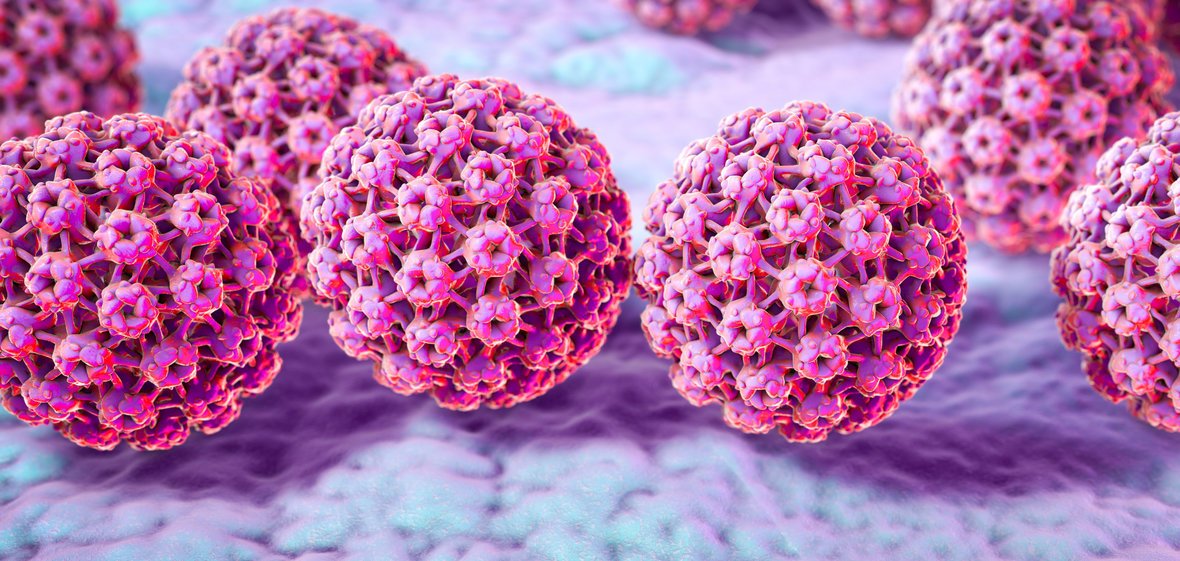HDAC (Histone Deacetylase) inhibitors used in cancer therapies can also treat human papillomavirus infections
Source: University Of Alabama at Birmingham Dec 02, 2018 6 years, 4 months, 3 weeks, 4 days, 4 hours, 44 minutes ago
Preclinical experiments by University of Alabama at Birmingham researchers suggest the cancer drugs vorinostat, belinostat and panobinostat might be repurposed to treat infections caused by human papillomaviruses, or HPVs.
HPV infections caused an estimated 266,000 deaths from cervical
cancer worldwide in 2012, according to the World
Health Organization. Routine screening by Pap smears or HPV DNA tests has reduced death rates in developed countries compared to less developed regions of the globe. Still, an estimated 12,200 United States women are diagnosed with cervical cancer each year.
Highly efficacious vaccines against HPV infection exist—including the recently approved Gardasil 9, which immunizes against nine genotypes of HPV known to cause cervical, vulvar, vaginal and anal cancers, and genital warts. But the vaccine needs to be given before a person becomes sexually active, since it has no therapeutic efficacy against existing HPV infections.
"Safe, effective and inexpensive therapeutic agents are urgently needed," said N. Sanjib Banerjee, Ph.D., assistant professor of Biochemistry and Molecular Genetics at UAB and lead author of the vorinostat study.
Epithelium of anogenital sites—the cervix, penis and anus—or epithelium of the mouth and throat are sites of HPV infection. But HPVs cannot be propagated in conventional cell culture, hampering the investigation into their pathogenic effects.
The laboratory of Louise Chow, Ph.D., and Thomas Broker, Ph.D., in the UAB Department Biochemistry and Molecular Genetics has investigated HPV-host interactions for decades. They discovered that the productive program of HPV depends on differentiation of the epithelium into a full-thickness, squamous epithelium. Furthermore, HPV reactivates host DNA replication in these differentiated cells, such that the replication proteins and substrates become available to support viral DNA amplification.
The Chow and Broker lab re-produced a fully differentiated human squamous epithelium by culturing primary human keratinocytes at an air-media interphase for two to three weeks, a growth they call raft culture. In 2009, their lab developed a breakthrough model for a raft culture of HPV-18-infected primary human keratinocytes, allowing a robust amplification of HPV-18 DNA and production of infective viral progeny. This productive raft culture is an ideal model for preclinical investigation of potential anti-HPV agents.
Banerjee and colleagues hypothesized that inhibitors of histone deacetylases, or HDACs, would inhibit HPV DNA amplification because of their known mechanism of disrupting chromosomal DNA replication. Chromosomal replication requires HDAC alterations of histone proteins, the proteins that act like spools that wind DNA to help package and condense chromosomes and the viral genome. Vorinostat inhibits many HDACs, so it might interrupt not only chromosomal replication but also viral DNA replication.
Using the HPV-18 model raft cultures, the researchers found that vorinostat effectively inhibited HPV-18 DNA amplification and virus production. Importantly, vorinostat also induced the programmed cell death called apoptosis in
a fraction of the differentiated cells. Cell death could be attributable to DNA breakage when chromosomal DNA replication was interrupted. Similar results were obtained with two additional HDAC inhibitors, belinostat and panobinostat. In contrast, the differentiated cells of uninfected raft cultures, which do not replicate their DNA, were thus largely spared in the presence of the inhibitors.
The UAB team also examined how vorinostat affected levels and functions of viral oncoproteins, and they described the mechanisms that led to programmed cell death in HPV-18-infected cultures. "On the basis of these detailed studies," Banerjee said, "we suggest that HDAC inhibitors are promising compounds for treating benign HPV infections, abrogating progeny production and hence interrupting infectious transmission."
The UAB team also reported that vorinostat caused extensive cell death in raft cultures of dysplastic and cancer cell lines harboring HPV-16. HPV-16 and HPV-18 are the most prevalent, high-risk HPVs responsible for causing anogenital and oropharyngeal cancers. "But further investigation would be required to verify that these agents could also be useful in treating HPV associated dysplasias and cancers," Banerjee said.
Reference: N. Sanjib Banerjee et al, Vorinostat, a pan-HDAC inhibitor, abrogates productive HPV-18 DNA amplification, Proceedings of the National Academy of Sciences (2018). DOI: 10.1073/pnas.1801156115
